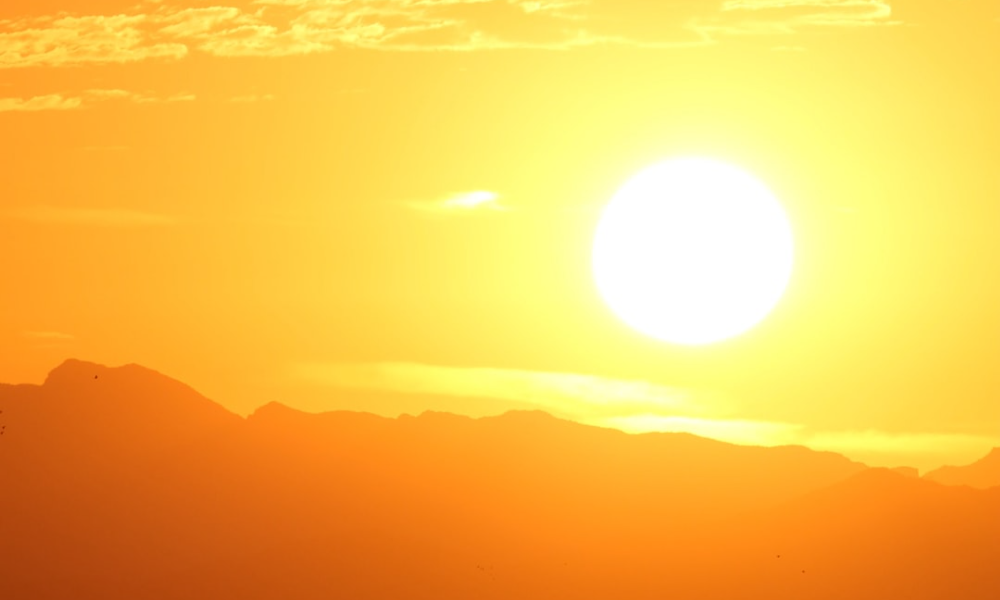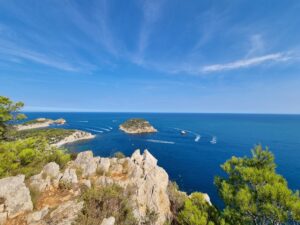AEMET issues yellow alert for potential for high temperatures across Marina Alta
The state meteorological agency advises that the next few nights could be uncomfortable as temperatures in some places might not drop below 25°c.

Monday 10th July 2023
Mike Smith
The state meteorological agency AEMET has issued a yellow alert warning for the potential for maximum temperatures to touch 38°c in several areas of the Marina Alta region on Tuesday.
The advisory is valid between 13:00 and 20:59 on Tuesday 11th July and warns that maximum temperatures could reach 38°c, maybe higher in some places, as a heat wave sweeps across the southern half of the Iberian peninsular.

AEMET issued a special advisory on Sunday afternoon, warning that a ridge of high pressure that is moving across many areas of Spain and Portugal is dragging in a very hot and dry air mass from the Sahara region, accompanied by suspended dust, which will cause a dramatic rise in temperatures during the first half of the week.
It adds that minimum temperatures are also likely to be very high, causing what it calls “tropical nights” especially in the south-eastern part of the peninsula where night-time temperatures could remain around 25°c or above. Xàbia is already experiencing these uncomfortable nights, with temperatures in the port area not dropping below 25.7°c on Saturday night.
AEMET is unable to establish with any certainty when the current heat wave will end but it is probable that these high temperatures will begin drop to more seasonal values from Wednesday.
How to deal with high temperatures
- Stay indoors as much as possible. Close the blinds, curtains and shutters to block out direct sunlight and shut windows during the hottest part of the day to keep out the warm air, only opening them when the outside feels cooler than the inside.
- Drink plenty of fluids, even if you don’t feel thirsty. However, limit your alcohol intake as it not only causes dehydration but also makes it difficult to sleep in already uncomfortable night-time conditions.
- Eat light meals, especially those food types that contain a high water content such as strawberries, cucumber, celery and lettuce. Avoid using the oven or hob to cook as their use can heat up the house.
- Schedule outdoor activities carefully. If you have to go outside, stick to the shade, especially when the sun is at its strongest (11:00-15:00) and avoid direct sunlight. Regularly reapply sunscreen, using at least SPF30 protection.
- Pace yourself. Be aware of the signs of heat stroke (throbbing headache; confusion; nausea; dizziness, amongst others) and heat exhaustion (heavy sweating; weakness or tiredness; cool, pale, clammy skin; fast, weak pulse; and muscle cramps, amongst others).
- Don’t try to exercise or do a lot of activities outdoors when it’s hot. Going for a run in the midday run risks dehydration, heat exhaustion and heat stroke.
- Wear loose, lightweight, light-coloured clothing and a wide brimmed that protects the whole head, including the back of the neck. Baseball caps are not effective protection.
- At night, remember that heat rises so, if it is possible, sleep in the lowest level of your home.
- Switch off all electrical items that are not needed. Even in stand-by mode, they can generate heat.
- Take a cool shower before going to bed. Drink a glass of cold water before turning in and keep another one close by.





